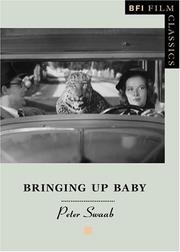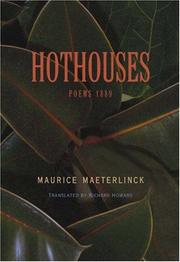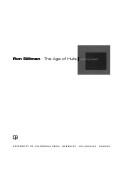| Listing 1 - 8 of 8 |
Sort by
|

ISBN: 1844570703 Year: 2010 Publisher: S.l. : Palgrave Macmillan,
Abstract | Keywords | Export | Availability | Bookmark
 Loading...
Loading...Choose an application
- Reference Manager
- EndNote
- RefWorks (Direct export to RefWorks)
Digital
Year: 1731 Publisher: [England? s.n.
Abstract | Keywords | Export | Availability | Bookmark
 Loading...
Loading...Choose an application
- Reference Manager
- EndNote
- RefWorks (Direct export to RefWorks)
Book
Year: 1641 Publisher: London : printed by R.H.,
Abstract | Keywords | Export | Availability | Bookmark
 Loading...
Loading...Choose an application
- Reference Manager
- EndNote
- RefWorks (Direct export to RefWorks)
eebo-0018
Inland navigation --- Canals --- Design and construction --- Ford, Edward, --- Designe for bringing a navigable river from Rickmansworth in Hartfordshire, to St. Giles in the Fields --- Lea River (Bedfordshire-Middlesex, England) --- Colne River (Hertfordshire-Middlesex, England) --- Navigation
Book
Year: 1641 Publisher: Printed at London : [s.n.],
Abstract | Keywords | Export | Availability | Bookmark
 Loading...
Loading...Choose an application
- Reference Manager
- EndNote
- RefWorks (Direct export to RefWorks)
eebo-0014
Inland navigation --- Canals --- Design and construction --- Ford, Edward, --- Designe for bringing a navigable river from Rickmansworth in Hartfordshire, to St. Giles in the Fields --- Lea River (Bedfordshire-Middlesex, England) --- Colne River (Hertfordshire-Middlesex, England) --- Navigation
Digital
Abstract | Keywords | Export | Availability | Bookmark
 Loading...
Loading...Choose an application
- Reference Manager
- EndNote
- RefWorks (Direct export to RefWorks)
Digital
Year: 1721 Publisher: [London s.n.
Abstract | Keywords | Export | Availability | Bookmark
 Loading...
Loading...Choose an application
- Reference Manager
- EndNote
- RefWorks (Direct export to RefWorks)

ISBN: 0691088381 0691088373 0691222428 Year: 2003 Publisher: Princeton, N.J. ; Oxford : Princeton University Press,
Abstract | Keywords | Export | Availability | Bookmark
 Loading...
Loading...Choose an application
- Reference Manager
- EndNote
- RefWorks (Direct export to RefWorks)
On May 31, 1889, a young Belgian lawyer from a wealthy bourgeois family in Ghent published a book of 33 poems in 155 copies. Maurice Maeterlinck's legal career was floundering but his road to literary greatness had begun. Long overshadowed by the plays that later won him the Nobel Prize, Serres chaudes (Hothouses) nonetheless came to be widely regarded as one of the cornerstones of literary Modernism after Baudelaire. While Max Nordau soon seized upon Maeterlinck's--tumult of images--as symptomatic of a pervasive social malaise, decades later Antonin Artaud pronounced, "Maeterlinck was the first to introduce the multiple riches of the subconscious into literature." Richard Howard's translation of this quietly radical work is the first to be published in nearly a century, and the first to accurately convey Maeterlinck's elusive visionary force. The poems, some of them in free verse (new to Belgium at the time), combine the decadent symbolism and the language of dislocation that Maeterlinck later perfected in his dramas. Hothouses reflects the influence not only of French poets including Verlaine and Rimbaud, but also of Whitman. As for the title, the author said it was "a natural choice, Ghent . . . abounding in greenhouses." The poems, whose English translations appear opposite the French originals, are accompanied by reproductions of seven woodcuts by Georges Minne that appeared in the original volume, and by an early prose text by Maeterlinck imaginatively describing a painting by the sixteenth-century Flemish artist Pieter Brueghel. A feat of daring power extraordinarily immediate and inventive, Hothouses will appeal to all lovers of poetry, and in particular to those interested in Modernism. Maeterlinck's enormous fame may have faded, but twentieth-century writers such as Beckett are still our masters who testify to its undying influence.
Dutch literature --- Poetry, Modern --- Poetry --- Chasses Lasses. --- Dim Hours. --- Ennui. --- Entreaty. --- Examinez. --- Fauves Las. --- Fevered Souls. --- God. --- Heures Ternes. --- Hothouse. --- Humble Offering. --- Lassitude. --- Monotonement. --- Offrande Obscure. --- Oraison. --- Prayer. --- Regarde. --- Serre Chaude. --- Tedium. --- Weary Beasts. --- Weary Hunting. --- ambulance. --- asylum. --- blanches. --- bringing. --- compromising. --- endormies. --- endormis. --- eternally frozen. --- famine. --- festival. --- immemorial storms. --- impuissante. --- malade. --- mensonges. --- moonlight. --- obscures. --- perpetually. --- purple snakes. --- quagmires roses. --- sadness. --- sentinelles. --- sopping woods. --- souffles. --- suburbs. --- suffocated. --- symboles. --- temptations. --- tristement. --- vainement. --- vraiment. --- warmest corners. --- Poetry. --- POETRY / European / General. --- Poems --- Verses (Poetry) --- Literature --- Philosophy

ISBN: 1282360140 9786612360145 0520940423 9780520940420 9780520250147 0520250141 9780520250161 0520250168 9781282360143 Year: 2007 Publisher: Berkeley, CA : University of California Press,
Abstract | Keywords | Export | Availability | Bookmark
 Loading...
Loading...Choose an application
- Reference Manager
- EndNote
- RefWorks (Direct export to RefWorks)
Between the Age of Innocence and the Age of Experience comes The Age of Huts. This book brings together for the first time all of the poems in Ron Silliman's Age of Huts cycle, including Ketjak, Sunset Debris, The Chinese Notebook, and 2197, as well as two key satellite texts, Sitting Up, Standing, Taking Steps, and BART. Each poem offers a radically different approach toward using language to explore the world. One of the founding works of Language Poetry, The Age of Huts is about everything, more or less literally, as each sentence, even each phrase, embarks on its own narrative, linking together to form a large polyphonic investigation of contemporary life. From Ketjak, one of the first poems to employ "the new sentence," to 2197, a serial work that scrambles the vocabulary and grammar of its sentences, The Age of Huts questions everything we have known about poetry in order to see the world anew.
American poetry. --- American literature --- 20th century american poetry. --- 2197. --- 21st century american poetry. --- age of huts cycle. --- american poet. --- american poetry. --- avant garde poetry. --- bart. --- bringing meaning out of work. --- contemporary life. --- disjunction. --- how to see the world. --- ketjak. --- language poetry. --- materiality. --- poems. --- poetics. --- poetry collection. --- poetry. --- polyphonic investigation. --- prose poetry. --- role of the reader. --- sitting up standing taking steps. --- sunset debris. --- the chinese notebook. --- the new sentence. --- united states poetry. --- vocabulary and grammar.
| Listing 1 - 8 of 8 |
Sort by
|

 Search
Search Feedback
Feedback About UniCat
About UniCat  Help
Help News
News